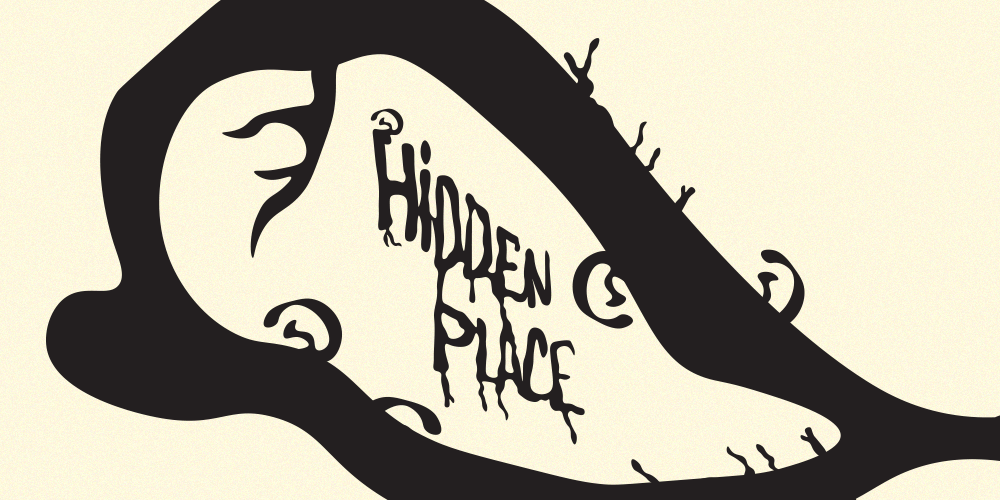The most generous phrase I can use to describe my freshman year of college is self-inflicted. At a time when most people are gearing up for the big, wild adventure of early adulthood, I was as inert as a slug, enduring a miserable, mopey existence that was not only voluntary but needlessly drawn out. It was like being a goth kid with none of the style.
The bright spot amid all that gloomy indulgence was music — not just listening to it, but the rituals of listening, as well: the bespoke CD-R mixes I spent hours concocting for myself; the nights devoted to spelunking the murky, never-ending mineshaft of LimeWire; and, of course, reinforcing the electrical tape on my Discman knock-off so the hatch wouldn’t pop open randomly during playback.
At 18, these music adjacent routines began to coalesce around one record, specifically: Vespertine. Björk’s fourth studio album (her most critically acclaimed, if we go by aggregators like Metacritic) was released on August 27th, 2001, the exact day my freshman semester started. It couldn’t have been a happier coincidence. As it turned out, listening to Vespertine—not just the how, but the where—would lead me through one of the darkest periods of my life.
•
My freshman experience wasn’t quite the lift-off I imagined for myself. I’d enrolled in a tiny school situated in an even tinier town; a recovering coal-mine community surrounded on three sides by cold, blue, Pennsyltucky mountains. Here, “main street” equated to about three vacant blocks, its only waypoints a quiet diner and a funky but decidedly out-of-place comic book shop.
Many people would find that sort of situation charming, my current self included. But to a suburb-bred teen from a coastal state? Pure alienation. What’s worse, I had always struggled to make friends, connect with other people emotionally, or generally put myself out there. Drama at home throughout my teen years aggravated that standoffishness. The fact that I’d been displaced from an anxious household into a small, unfriendly ecosystem just compounded the problem.
As determined as I was sensitive, I soldiered on. For every step forward (making some would-be friends, doing well in class), there was an equivalent stumble (tension building between withdrawn, antisocial me and my popular, athletic, hard-partying roommate.) Despite my efforts, things were getting worse.
Moreover, I felt like I was cornered. To an introvert like me, the co-ed dorm was a perfect nightmare, an ever-spinning tornado of hormones, melodrama, and peer pressure; the communal bathroom alone still haunts my dreams. Off-campus was no better. The larger community was chilly, at best, turning a cold shoulder to the mobs of privileged, imported college kids trampling on its blue-collar sensibilities.

A month into the semester, a package arrived in the mail, the first I’d ever purchased off Amazon. Slicing it open and rifling through the brown packing paper, my eyes fell onto the tendrilous, pale cover of Björk’s Vespertine, the Icelandic songstress herself front and center, garlanded by a (soon-to-be infamous) swan dress as she shielded her eyes from a bleach-white sun. The CD was out of its tray and crammed into my faux-Discman the moment I returned to my dorm room.
Hitting play for the first time felt momentous. I’d never heard music like this before: the nervy, foreboding loops of “Hidden Place,” the sensory contrast between the submerged melodies and crackling percussion on “Cocoon,” the slow, theatrical build of “It’s Not Up to You.” And that was only the first three tracks.
Of course, as an avid Björk fanboy since high school, I was primed for instant euphoria. I remember devouring Post three times over as I drove, somnolent and bleary-eyed, to return my rental tux the day after prom. My copy of Homogenic had been spun so often that the disc itself resembled the surface of a well-used hockey rink.
Despite this deep adoration, Björk remained a hidden passion. I feared confused looks and raised eyebrows from family and friends if I ever dared reveal my secret love. Could I even articulate the appeal if I tried? She was visceral, wild, and feminine, a far cry from the methodical, male-led acts that occupied the rest of my CD collection. Even the more integral art-rock ’90s bands I worshipped — Radiohead, The Smashing Pumpkins, and Beck among them — couldn’t quite compare to Björk’s deliberative weirdness.
And now, to my furtive delight, another musical obsession had arrived. Just as I was on the verge of wearing my Homogenic CD down into a scuffed nub of plastic, Vespertine landed, and with it, Björk’s transformation from indie arthouse busker to, as Rolling Stone’s 2001 review put so aptly, pure, interstellar diva.
•
One lone bright spot in my freshman year was my part-time job. It was no ordinary gig. I had the good fortune of being hired as a recording assistant for the music department through the college’s work-study program. It paid only five dollars an hour, but that hardly mattered. For a lower-middle-class kid like me, who was attending private school only by the grace of a generous scholarship, getting paid to do odd jobs in a music studio felt like winning the lottery.
And it truly was a dream job. The department had not one, but two music studios, and I was in charge of both. The first, wedged into the concrete basement of the campus’s lone student center, was a million-dollar lab outfitted with all the latest technology, including high-end Macs that could convert vinyl and tape recordings into MP3s, then a cutting-edge file format.
And then there was the second studio. Concealed in the bowels of the music department’s concert hall, it had the look and feel of what the always-online set calls a liminal space: abandoned, transitory, banal in ways that feel eerily familiar. The studio counted only a few dilapidated, dusty chairs among its gear. Drywall peaked through the holes that lined the recording booth, and the discolored carpet sported bright, vivid trapezoids where the amp racks had once protected it from exposure. I was convinced I was the only person on campus who knew it existed.
And yet it was in that grimy, forgotten space where I spent the most time with Vespertine. Working evenings in the ultramodern studio, I would hurry through my assignments converting vinyl-only classical tracks into MP3 catalogs. Then, CD player in tow, I’d haul ass across campus to the back of the concert hall. Using my assistant’s key, I’d step into the derelict studio, launching one or two glances over my shoulder to make sure no one was watching me enter my ghostly sanctuary.
And sanctuary it was. I’ve always had a particular fondness for things that are worn or decayed. There’s something exquisite, maybe even painterly, about the way a car hood rusts to a fiery patina, or the inevitability of an old tree trunk rotting into a loamy, mushroom-flecked caldera. Windowless and no bigger than a walk-in closet, the old studio possessed that same sort of corroded charm. There in the AM hours, with just enough light to cast a handful of shadows, I played Björk’s homespun confessional on repeat. As classmates partied and drank in the dorms next door, I levitated within Vespertine’s Arctic bubble, mimicking the self-willed confinement Björk described on “Unison,” the album’s final track.
For the first time, listening to music felt like more than just a reassuring habit. Now, it had become sustenance.
I don’t think it’s a fluke that the battered, unkempt studio became the nucleus of my Vespertine worship. In a 2002 interview, Björk told the Guardian that her own recording studio was a refuge, a place she could feel safe “surrounded by microphones and equipment and all the things I love.” The album reflects that intimacy. From “Hidden Place” onward, Björk surrenders to the warmth and happiness of solitude, her music bristling with sounds that recoil and fold into themselves. Percussion moves as quiet as a spider, skittering overhead as she half-mutters to herself. Hushed, intimate synth work yawns awake, pulses, and then fades back into sleep while backing vocalists intone like the muses of a wistful Greek chorus.
This is homestead at day’s end, dusk light peeking in through rafters, shadows distending across walls. Dark, cozy spaces serve as embodiments of peace, the same that surrounded me in that busted studio.
Outside my cloistered space, Björk’s millennian fame was being defined by something other than her music. Vespertine was barely in the headlines; that honor was reserved for the dress. Björk’s swan getup was a meme before the internet was ready to handle one, a real-life viral novelty reproducing itself across the public consciousness while the digital equivalents were still in their infancy. To a public not accustomed to the out-there quirks of Björk’s persona, the only acceptable reaction was scorn.
In retrospect, none of this should’ve come as a surprise. The turn of the millennium was an embarrassing moment for American culture, at least in the mainstream. Let’s not forget, this was a time when post-911 jingoism, the “butt rock” of Creed, Limp Bizkit, and Staind, and frosted tips all reigned supreme. In a country that celebrated Fred Durst, Kid Rock, and the denim-draped love of Britney and Justin, Björk never stood a chance. She was still that one-off oddity, a weird, screechy “girl” getting chased by an oversized teddy bear. Thus, her decision to show up to the Academy Awards in a ridiculous bird getup was worthy only of talk-show ridicule and ham-fisted parody. “This girl should be put into an asylum,” Joan Rivers famously remarked.

Despite the public shaming, the swan was perfectly Björkish, at once silly, poetic, beautiful, alien, and jarring. Tastemakers now consider it one of the most iconic dresses of all time, a prelude to the intricate, striking performance art that has defined Björk’s career. It even earned its own Wikipedia page.
The reclamation of the swan dress is due in large part to the cred Björk has earned in the ensuing decades. The cultural valuation has course-corrected, as Vespertine’s critical legacy proves. But in 2001, the sheer audacity of wearing the swan overshadowed the labor Björk had invested in the album. As a devotee, it was easy for me to be resentful of all the snide conversations, jokes, and articles about the strange Icelandic singer traipsing around in “that bird dress.” I’d convinced myself that the hordes who distilled Björk down to oddball attire were cheating themselves. They had no idea what they were missing. My dormmates, blaring Puddle of Mudd at 4 AM while downing blender margaritas, would never get it. Neither would the locals, who had probably never heard of Björk, and even if they had, wouldn’t be caught dead discussing who wore what at the Oscars (for the record, they would’ve likely been listening to Toby Keith and talking Steelers football.)
Of course, I’d never broach the topic, either. At 18, I was convinced my taste in music was unassailable. But I was also a coward—that is, much too chickenshit to argue with strangers, friends, or even family about an artist as niche as Björk. Surrounded by nonbelievers, I played Vespertine alone in the bedraggled studio. Ignored by media jesters for the spectacle of a swan-shaped dress, the album spun along.
•
Halfway through my eight-year stretch, four years removed from both Vespertine’s release and that lunch-pail college town, I’d reached my lowest point. It was a forlorn, subzero night, cold as cold can get. I was alone, as usual. No friends. No job. Exhausted and depressed with no wherewithal to self-diagnose — society was at least a decade away from the universalization of phrases like “self-care” — I pondered what sort of future awaited me. Years of indolence and self-pity? Homelessness? Living with my parents at 40? Suicide? The questions dashed through my mind, vanishing as quickly as they appeared. Whatever delirium gripped me, it had left me stupid, confused, melodramatic, and uninspired.
Before I crawled into bed, I scrolled to the Vespertine playlist on my iPod. “Undo” was the first track that came up. I have an intense affinity for the song. It is, I’m sure, the greatest five-and-a-half minutes of music Björk has ever birthed. Sitting on the floor, I leaned my head back against the edge of my bed and trained my eyes onto the blank ceiling. Björk’s coos landed like counsel, an itemized list of suggestions to get myself right:
Surrender. Lean into it. Unfold.
There was Vespertine flittering in on its crystalline cobweb again, just when I needed it most. Just as it had years earlier. Once more, the album was offering its gifts, its wisdom, its splendor. And once more, I accepted them willingly, gratefully, in a space not unlike that dark, desolate studio where I’d first discovered them.
I’m not suggesting that Vespertine saved my life. But, as an essential stitch in a larger patchwork of music, it absolutely carried me until things trended upward. In four more years, I’d have a grad degree and a job. In another four, I was married. I’d feel functional, worthy, something approaching human. Increasingly, there were moments where I’d think about yelling back against the arrow of time at 18-year-old me, telling him to be patient, to find happiness in small moments, to savor rather than resent his twenties, even though he’d felt disconnected the whole way through. I’d want to comfort him somehow.
But at that point, it didn’t matter anymore. By the end of those eight, long years, I had grown happy with my penchant for seclusion, shyness, and detachment. I had come to accept that I could live an abnormal life normally. Eventually, I would even look back on that time with fondness.
It took that journey, those awkward, push-pull stages of life, to finally solve the mystery of Vespertine. Björk’s masterwork is a celebration not of being alone, per se, but of confronting, and accepting, your own weirdness. Listening to it, even today, I feel as though I’m once again sequestered in that threadbare studio. It might only exist now as a memory, but it’s my memory — a memory of me and me alone, to cherish forever. In that cosseted space, I’m a remnant. A vestige. The last of my kind, cozy in the darkness. And that’s perfectly alright by me. •




